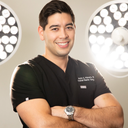I am unhappy with my nose, but I can't afford rhinoplasty surgery. I am considering a non-surgical option but don't know much about it other than that it is supposed to be less expensive than plastic surgery. What exactly is a non-surgical nose job? Do the results last?
Answers (153)
From board-certified doctors and trusted medical professionals
Dr. Sam Naficy, MD, FACS

Dr. Sam Naficy, MD, FACS
Board Certified Facial Plastic Surgeon
Answer
Dr. John Bitner, MD

Dr. John Bitner, MD
Board Certified Facial Plastic Surgeon
Answer
Dr. Kyle Kimura, MD

Dr. Kyle Kimura, MD
Board Certified Facial Plastic Surgeon
Answer
Dr. Richard G. Reish, MD, FACS

Dr. Richard G. Reish, MD, FACS
Board Certified Plastic Surgeon
Answer
Dr. Gary Linkov, MD

Dr. Gary Linkov, MD
Board Certified Facial Plastic Surgeon
Answer
Dr. Luis Macias, MD, FACS

Dr. Luis Macias, MD, FACS
Board Certified Plastic Surgeon
Answer
Dr. Oakley Smith, MD, FRCSC

Dr. Oakley Smith, MD, FRCSC
Certified Facial Plastic Surgeon
Answer
Dr. J. Jason Wendel, MD, FACS

Dr. J. Jason Wendel, MD, FACS
Board Certified Plastic Surgeon
Answer
Dr. John L. Burns Jr., MD

Dr. John L. Burns Jr., MD
Board Certified Plastic Surgeon
Answer
Dr. Deepak Raj Dugar, MD
Dr. Deepak Raj Dugar, MD
Board Certified Facial Plastic Surgeon
Answer
More Rhinoplasty Questions
See all Rhinoplasty Q&AWE SEND PRETTY
EMAILS
What’s trending? Who’s turning heads? Which TikTok myths need busting? We’ve got you. No fluff, no gatekeeping—just real talk. Get our free, unfiltered newsletter.